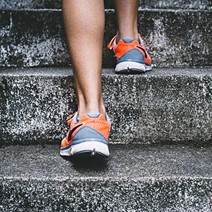Falls are a significant health concern, particularly among older adults. They can lead to serious injuries, loss of independence, and even death. According to the World Health Organization, falls are the second leading cause of accidental injury deaths worldwide. While the statistics are alarming, the good news is that falls are often preventable. One of the most effective ways to reduce the risk of falls is through regular exercise.
In 2020-2021, 42% of hospitalized injury cases and 40% of accidental injury deaths in Australia were due to falls. Falls resulted in 243,000 hospitalization cases in Australia in the same period. This means that around 950 people per 100,000 population were hospitalized due to falls.

At least one-third of community-living Australians aged 65 years and over fall every year, with even higher rates for people in aged-care facilities and hospitals. Falls are also the leading cause of injury-related death and hospitalization in these people. An older person is over three times more likely to be admitted to a nursing home after a fall than before, and over ten times more likely after a fall that caused an injury. Falls can also result in permanent disability, restriction of activity, loss of confidence and fear of falling, all of which reduce quality of life and independence.
The Role of Exercise Physiology in Falls Prevention:
An exercise physiologist can help with falls prevention by designing individualized exercise programs that improve strength, balance, and coordination, thereby reducing the risk of falls in vulnerable populations.
- Balance and Coordination: Exercises that focus on balance, such as tai chi, yoga, and specific balance training exercises, help improve stability and prevent falls.
- Muscle Strength: Strength training exercises, including the use of weights or resistance bands, are essential for maintaining muscle mass and strength, which are critical for supporting the body and preventing falls.
- Flexibility and Range of Motion: Stretching exercises enhance flexibility and joint range of motion, making movements smoother and reducing the likelihood of falls.
- Endurance: Cardiovascular exercises like walking, swimming, or cycling improve overall stamina and reduce fatigue, which can contribute to better balance and a lower risk of falls.

It’s recommended that older adults, and anyone for that matter, consult with an allied health professional such as an Exercise Physiologist to construct a tailored exercise program that meets their individual needs and abilities.
To conclude, falls prevention is a critical component of healthy aging, and exercise plays a pivotal role in maintaining balance, strength, and general physical function. By incorporating regular physical activity into daily routines, older adults can significantly reduce their risk of falls and enhance their quality of life. As research continues to support the benefits of exercise for falls prevention, it is essential to promote and encourage physical activity among older populations.
If you would like further information or to book an appointment with an exercise physiologist, please call The Physio Clinic on 8342 1233.
Written by Peter Kollis | Exercise Physiologist at Prospect
























